Subtotal: £17.42
Marbled Whiptail Catfish – Loricaria Simillima – South American Catfish, Easy Care Freshwater Fish That Flourishes in a Stable Environment, Perfect for Home Aquariums
£27.49 Original price was: £27.49.£23.22Current price is: £23.22.
Welcome the Marbled Whiptail Catfish, a stunning Loricaria Simillima from South America. Its elegant marbled pattern and peaceful nature make it a perfect addition to your aquarium. Care for this beautiful fish and enjoy its graceful movements in your community tank.
2002 in stock
Species Introduction
The Marbled Whiptail Catfish, scientifically known as Loricaria simillima, is a captivating species native to the freshwater rivers and streams of South America. This enchanting fish is part of the Callichthyidae family, which encompasses a variety of catfish known for their unique body shapes and behaviors. The Marbled Whiptail Catfish is particularly distinguished by its elongated, slender body adorned with a beautiful marbled pattern that varies in shades of brown, tan, and cream, allowing it to blend seamlessly into its natural habitat. These fish are primarily found in slow-moving waters, where they inhabit sandy or muddy substrates, often among submerged logs and vegetation. Their natural environment is characterized by a rich biodiversity, making them an ideal choice for community tanks that aim to replicate the vibrant ecosystems of South America.
Care Requirements Dashboard
Essential Care Guide for Your Marbled Whiptail Catfish
| Optimal Living Conditions | |
|---|---|
| Water Temperature | 22-28°C (72-82°F) |
| pH Level | 6.0-7.5 |
| Water Hardness | 2-15 dKH |
| Minimum Tank Size | 120L (30 gal) |
| Salinity | Freshwater |
| Care Level | Beginner to Intermediate |
✓ Care Level: Easy
Tank Size: Minimum 75 liters (20 gallons)
Water Temperature: 22-28°C (72-82°F)
pH Level: 6.0-7.5
Water Hardness: 5-20 dGH
Caring for the Marbled Whiptail Catfish is a rewarding experience, as they are known for their adaptability. They thrive in well-maintained tanks with stable water parameters. A minimum tank size of 75 liters (20 gallons) is recommended to provide ample space for swimming and foraging. The ideal water temperature ranges from 22 to 28 degrees Celsius (72 to 82 degrees Fahrenheit), and it is crucial to maintain a pH level between 6.0 and 7.5, as well as a water hardness of 5 to 20 dGH. Regular water changes and filtration are essential to ensure a healthy environment for these aquatic companions.
Natural Behavior & Temperament
The Marbled Whiptail Catfish is a peaceful and sociable species, making them an excellent addition to community tanks. They exhibit a unique behavior known as ‘bottom-dwelling,’ where they prefer to stay close to the substrate, foraging for food and exploring their surroundings. Their natural inclination to hide among rocks, plants, and driftwood can be enhanced by providing plenty of hiding spots in the aquarium. These fish are generally non-aggressive and can coexist harmoniously with a variety of tank mates, including other peaceful species. They are most active during dawn and dusk, displaying fascinating swimming patterns as they search for food. Observing their interactions with other fish can be a delightful experience, as they often engage in playful behavior with their companions.
Tank Setup Guide
✓ Ideal Environment: Natural biotope
Substrate: Fine sand or smooth gravel
Decorations: Driftwood, rocks, and live plants
Creating an ideal environment for your Marbled Whiptail Catfish involves replicating their natural habitat as closely as possible. A fine sand or smooth gravel substrate is recommended, as it allows these fish to forage comfortably without injuring their delicate bodies. Incorporating driftwood, rocks, and live plants into the tank setup not only enhances the aesthetic appeal but also provides essential hiding spots and territories for these fish. Live plants such as Java Fern and Anubias are excellent choices, as they thrive in similar water conditions and contribute to the overall health of the aquarium. Additionally, maintaining a gentle water flow will help mimic the slow-moving waters of their natural habitat, ensuring a comfortable living space for your aquatic friends.
Water Quality Management
⚠ Important Water Parameter Notice
pH: 6.0-7.5 | Temperature: 22-28°C | Hardness: 5-20 dGH
Maintaining optimal water quality is crucial for the health and well-being of your Marbled Whiptail Catfish. Regular testing of water parameters such as pH, temperature, and hardness is essential to ensure a stable environment. The pH level should be kept between 6.0 and 7.5, while the water temperature should range from 22 to 28 degrees Celsius (72 to 82 degrees Fahrenheit). Water hardness should be maintained between 5 and 20 dGH. Utilizing a high-quality filtration system can help maintain clear water and remove harmful toxins. Regular water changes, approximately 25% every two weeks, will also contribute to a healthy environment by removing waste and replenishing essential minerals.
Feeding & Nutrition
✓ Diet: Omnivorous
Recommended Foods: Sinking pellets, algae wafers, and blanched vegetables
The Marbled Whiptail Catfish is an omnivorous species, which means they thrive on a varied diet that includes both plant and animal matter. A well-balanced diet is crucial for their growth, health, and overall well-being. High-quality sinking pellets and algae wafers are excellent staple foods that provide essential nutrients. Additionally, incorporating blanched vegetables such as zucchini, spinach, and peas into their diet can enhance their nutritional intake and promote healthy digestion. Feeding should occur once or twice daily, with portions that can be consumed within a few minutes to prevent overfeeding and maintain water quality. Observing their feeding behavior can also provide insight into their health; a healthy catfish will actively forage and display interest in food.
Compatibility Guide
⚠ Important Tank Mate Considerations
Best Tank Mates: Peaceful community fish
The Marbled Whiptail Catfish is known for its peaceful nature, making it an ideal candidate for community tanks. They thrive in the company of other non-aggressive species, such as tetras, rasboras, and small cichlids. However, it is essential to avoid housing them with larger, more aggressive fish that may view them as prey. When selecting tank mates, consider the size and temperament of the species to ensure a harmonious environment. Providing ample hiding spots and territories will help reduce stress and promote social interactions among the fish. Regular observation of their behavior will allow you to identify any signs of stress or aggression, ensuring a balanced community tank.
Health & Wellness
✓ Common Health Issues: Minimal
Prevention: Regular water changes and proper diet
The Marbled Whiptail Catfish is generally a thriving species with minimal health issues when provided with proper care. However, they can be susceptible to common freshwater fish diseases such as ich and fin rot, especially in poorly maintained tanks. Regular water changes, good filtration, and a balanced diet are essential to prevent health problems. Monitoring your fish for any signs of distress, such as changes in behavior, loss of appetite, or visible lesions, is crucial for early detection and treatment. If any health issues arise, it is important to act quickly to isolate affected fish and treat them appropriately, ensuring the well-being of your aquatic companions.
Breeding Information
⚠ Breeding Conditions: Specific requirements
Breeding the Marbled Whiptail Catfish can be a rewarding experience, although it requires specific conditions to encourage spawning. These fish are known to be egg scatterers, and creating a suitable environment is essential for successful reproduction. To initiate breeding, it is recommended to maintain slightly cooler water temperatures, around 22 degrees Celsius (72 degrees Fahrenheit), and provide ample hiding spots for the female to lay her eggs. Once the eggs are laid, they will typically adhere to surfaces such as plants or rocks. After a few days, the eggs will hatch into fry, which require infusoria or finely crushed flakes for feeding until they are large enough to consume regular food. Careful monitoring of the fry’s growth and health is essential during this delicate stage.
Acclimation Process
✓ Acclimation Method: Slow introduction
Introducing your Marbled Whiptail Catfish to a new tank environment requires a careful acclimation process to minimize stress and ensure a smooth transition. The best method is to float the sealed bag containing the fish in the aquarium for about 15 minutes to equalize the temperature. After this, gradually mix small amounts of tank water into the bag over the course of an hour. This slow introduction helps the fish adjust to the water parameters of the new environment. Once acclimated, gently release the fish into the tank using a net to avoid introducing any excess water from the bag. Monitoring the fish closely during the first few days in their new home will help ensure they adapt well and thrive.
Long-term Care
✓ Lifespan: Up to 10 years
With proper care, the Marbled Whiptail Catfish can live for up to 10 years, making them a long-term aquatic companion. To ensure a healthy lifespan, it is essential to provide a stable environment with consistent water parameters, a balanced diet, and regular maintenance. Keeping a close eye on their behavior and health will allow you to address any issues promptly. As they grow, it is important to monitor their size and adjust tank mates accordingly to prevent overcrowding and stress. Regular interaction with your fish, such as observing their feeding habits and social behaviors, can enhance your experience and deepen your connection with these beautiful creatures.
Natural Habitat Recreation
⚠ Biotope Setup: Mimic natural environment
Recreating the natural habitat of the Marbled Whiptail Catfish in your aquarium can greatly enhance their well-being and overall health. To mimic their environment, focus on incorporating elements such as fine substrates, driftwood, and live plants. The substrate should be soft and fine to allow for natural foraging behaviors. Adding driftwood not only provides hiding spots but also contributes to the aesthetic appeal of the tank. Live plants such as Amazon Sword and Java Moss can create a lush environment that promotes natural behaviors and provides additional cover. Additionally, maintaining a gentle water flow and ensuring the tank is well-lit will help replicate the conditions found in their native rivers and streams.
Seasonal Care Adjustments
✓ Seasonal Considerations: Temperature and lighting
As the seasons change, it is important to adjust the care of your Marbled Whiptail Catfish to ensure their continued health and happiness. During warmer months, monitor the water temperature closely to prevent overheating, as these fish prefer a stable environment. In contrast, during cooler months, consider using a heater to maintain optimal temperatures. Additionally, adjusting the lighting schedule to mimic natural daylight cycles can promote healthy plant growth and enhance the overall ambiance of the aquarium. Regularly checking water parameters and making necessary adjustments will help maintain a stable environment, ensuring your aquatic companions thrive year-round.
Expert Tips
⚠ Expert Advice: Enhance tank environment
To provide the best care for your Marbled Whiptail Catfish, consider implementing a few expert tips. Regularly monitor water parameters using reliable test kits to ensure a stable environment. Incorporating a variety of hiding spots and territories will help reduce stress and promote natural behaviors. Additionally, consider using a sponge filter to maintain gentle water flow, which is ideal for these bottom-dwelling fish. Observing their behavior will provide insight into their health and happiness; if they are actively foraging and interacting with their environment, it is a good sign. Lastly, engaging in regular maintenance, including water changes and substrate cleaning, will contribute to a thriving aquarium ecosystem.
Troubleshooting
⚠ Common Issues: Address promptly
While the Marbled Whiptail Catfish is generally a thriving species, certain issues may arise that require attention. Common problems include poor water quality, which can lead to stress and illness. Regular testing and maintenance of water parameters are essential to prevent these issues. Additionally, if you notice signs of aggression from tank mates, it may be necessary to rearrange the tank or remove the aggressive fish to restore harmony. If your catfish exhibit unusual behavior, such as lethargy or loss of appetite, it is crucial to investigate potential causes, including water quality, diet, and tank conditions. Addressing these issues promptly will help ensure the health and well-being of your aquatic companions.
Scientific Background
The Marbled Whiptail Catfish belongs to the Callichthyidae family, which is known for its diverse range of catfish species. The scientific classification of this fish is as follows: Kingdom: Animalia, Phylum: Chordata, Class: Actinopterygii, Order: Siluriformes, Family: Callichthyidae, Genus: Loricaria, Species: simillima. This species is characterized by its unique morphology, including a flattened body and a distinctive pattern of coloration that serves as camouflage in its natural habitat. Research on the Marbled Whiptail Catfish has highlighted its role in maintaining the ecological balance of freshwater ecosystems, as they contribute to the breakdown of organic matter and algae. Understanding their biology and behavior is essential for successful care and breeding in captivity.
Advanced Care Techniques
For aquarists looking to enhance their care techniques for the Marbled Whiptail Catfish, consider implementing advanced methods such as establishing a breeding colony. Providing a separate breeding tank with optimal conditions can encourage spawning behavior. Additionally, utilizing a variety of foods, including live and frozen options, can stimulate appetite and promote health. Engaging in regular observation and interaction with your fish will deepen your understanding of their needs and behaviors, allowing for more tailored care. Lastly, participating in aquarist communities or forums can provide valuable insights and tips from experienced hobbyists, further enhancing your knowledge and skills in caring for these beautiful creatures.
Water Quality Parameters
Optimal Range
24-27°C
6.5-7.5
0 ppm
Caution Zone
22-24°C or 27-29°C
6.0-6.5 or 7.5-8.0
0.25-0.5 ppm
Danger Zone
<22°C or >29°C
<6.0 or >8.0
>0.5 ppm
Monitoring Tip: Test water parameters weekly and perform regular water changes to maintain optimal conditions for your aquatic friends!
Frequently Asked Questions
Q: What tank size is required for the Marbled Whiptail Catfish?
The Marbled Whiptail Catfish, or Loricaria simillima, thrives best in a spacious aquarium. A minimum tank size of 100 litres (approximately 26 gallons) is recommended. This size provides ample swimming space and allows for appropriate filtration and water movement. A larger tank is preferable as it can better accommodate the territorial behaviour of these fish. When establishing the tank, ensure that it is well-aquascaped with hiding spots, such as caves and driftwood, which cater to their natural instincts. Regular maintenance of the tank, including water changes and monitoring water parameters, will contribute to a healthy environment for your aquatic companions.
✓ Expert Tip
Consider adding a gentle filter to maintain water quality without creating strong currents, as these fish prefer calmer waters.
Q: What water parameters do Marbled Whiptail Catfish require?
Marbled Whiptail Catfish prefer slightly acidic to neutral water conditions, with a pH range of 6.5 to 7.5 being ideal. They thrive in soft to moderately hard water, with a hardness of 2 to 15 dGH. Maintaining a water temperature between 24°C to 28°C (75°F to 82°F) is crucial for their well-being. Regular testing of water parameters is essential to ensure a stable environment; fluctuations can lead to stress and health issues. Additionally, performing regular water changes of 10-20% weekly will help maintain water quality and remove accumulated waste.
✓ Expert Tip
Utilise a reliable water conditioner to remove harmful chemicals and chlorine from tap water before adding it to the aquarium.
Q: How often should I feed Marbled Whiptail Catfish?
Feeding Marbled Whiptail Catfish should occur 2-3 times a week, as they are primarily herbivorous. A balanced diet comprising high-quality sinking pellets, algae wafers, and blanched vegetables like zucchini or spinach is ideal. They particularly enjoy foraging for food, so providing a variety of options will encourage natural behaviour and maintain their health. Avoid overfeeding, as uneaten food can deteriorate water quality. Monitor their eating habits; if food remains uneaten after a few hours, adjust the quantity accordingly.
✓ Expert Tip
Incorporate a variety of foods to ensure a balanced diet, and consider using feeding clips for vegetables to prevent them from floating away.
Q: What are the best tank mates for Marbled Whiptail Catfish?
When selecting tank mates for Marbled Whiptail Catfish, opt for peaceful species that share similar water parameter preferences. Suitable companions include small to medium-sized tetras, rasboras, and peaceful corydoras catfish. Avoid aggressive or overly large fish that may intimidate or harm them. Marbled Whiptails are generally shy and may require hiding spots to feel secure. Ensure that the tank is not overcrowded, as this can lead to stress and territorial disputes. Monitor interactions closely, especially during the initial introduction, to ensure compatibility.
✓ Expert Tip
Introduce new fish gradually to allow the Marbled Whiptail Catfish to adjust to the presence of their new companions without undue stress.
Q: How do I properly acclimatise Marbled Whiptail Catfish to my aquarium?
Acclimatising Marbled Whiptail Catfish to a new environment is crucial for their health. Begin by floating the sealed bag containing the fish in your aquarium for about 15-20 minutes to equalise the temperature. Afterward, slowly add small amounts of tank water to the bag every 5 minutes, gradually increasing the volume over the course of an hour. This process helps the fish adjust to the water parameters. Once acclimatised, gently release them into the aquarium using a net to avoid introducing excess bag water. Monitor their behaviour closely for signs of stress or distress.
✓ Expert Tip
Avoid pouring bag water directly into your aquarium, as it may contain pollutants or pathogens that could harm your fish.
Q: What are the signs of healthy Marbled Whiptail Catfish?
Healthy Marbled Whiptail Catfish exhibit bright, vibrant colours and clear eyes. They should be active, swimming around the tank and foraging for food rather than hiding excessively. Observe their fins; they should be fully extended and free of tears or lesions. Healthy fish also have a well-rounded body shape, without signs of emaciation or swelling. Regular monitoring of water quality and maintaining proper tank conditions will contribute to their overall health, making it easier to spot any potential issues early on.
✓ Expert Tip
Keep a close eye on their feeding habits; a sudden change can indicate stress or illness.
Q: How do I successfully breed Marbled Whiptail Catfish?
Breeding Marbled Whiptail Catfish requires specific conditions. To encourage breeding, maintain a slightly acidic pH and a temperature of around 26°C (79°F). Provide ample hiding places using caves or dense vegetation for the female to lay her eggs. After spawning, the male will guard the eggs, which typically hatch in 4 to 6 days. After hatching, the fry can be fed infusoria or finely crushed flake food until they are large enough for small pellets. It is essential to separate fry from adults to prevent predation.
✓ Expert Tip
Consider setting up a dedicated breeding tank to ensure the safety of the fry during their early development stages.
Q: What temperature should I maintain for Marbled Whiptail Catfish?
Maintaining a stable temperature is vital for the health of Marbled Whiptail Catfish. A temperature range of 24°C to 28°C (75°F to 82°F) is optimal. Sudden fluctuations can lead to stress and weaken their immune system, making them susceptible to diseases. It is advisable to use a reliable aquarium heater with a thermometer to monitor the temperature consistently. Regularly check the temperature, especially during seasonal changes, to ensure it remains within the ideal range.
✓ Expert Tip
Consider placing the heater in a location that allows for even heat distribution throughout the tank.
Q: How long do Marbled Whiptail Catfish typically live in captivity?
With proper care, Marbled Whiptail Catfish can live for 10 to 15 years in captivity. Providing a stable environment, maintaining water quality, and feeding a balanced diet are essential factors that influence their lifespan. Regular monitoring for signs of stress or illness, along with timely interventions, can significantly enhance their longevity. An established aquarium with appropriate tank mates will further contribute to their well-being, allowing them to thrive in a harmonious environment.
✓ Expert Tip
Document any changes in behaviour or health, as this can help in identifying issues early and ensuring a long, healthy life.
Q: What type of substrate is most suitable for Marbled Whiptail Catfish?
Marbled Whiptail Catfish prefer a soft substrate that allows them to forage naturally. Fine sand or smooth gravel is ideal, as it prevents injury to their delicate bodies and enables them to sift through the substrate for food. Avoid sharp or coarse substrates that may harm their skin. Additionally, incorporating some leaf litter or soft decorations can provide additional comfort and mimic their natural habitat. Regularly clean the substrate to prevent the accumulation of waste, which can negatively impact water quality.
✓ Expert Tip
Consider using a substrate vacuum during water changes to maintain cleanliness and promote a healthy environment.
Q: What behavioural patterns should I expect from Marbled Whiptail Catfish?
Marbled Whiptail Catfish are generally peaceful and shy, often spending time hiding amongst plants or decorations. They are primarily nocturnal, becoming more active during the evening and night hours when they forage for food. During the day, they may be seen resting on the substrate or clinging to surfaces. Their unique behaviour of using their barbels to sift through the substrate for detritus and algae is fascinating to observe. Providing ample hiding spots and a well-structured environment will encourage their natural behaviours and reduce stress.
✓ Expert Tip
Ensure to observe their behaviour at different times of the day to appreciate their unique habits fully.
Q: How can I prevent common diseases in Marbled Whiptail Catfish?
Preventing diseases in Marbled Whiptail Catfish begins with maintaining excellent water quality and stable tank conditions. Regular water changes, monitoring parameters, and avoiding overcrowding are crucial. Quarantining new fish before introducing them to the main tank can prevent the spread of pathogens. Additionally, ensure that the fish have a balanced diet to strengthen their immune system. Look out for signs of stress, such as hiding or loss of appetite, and address any issues promptly to prevent disease outbreaks.
✓ Expert Tip
Consider using aquarium salt in moderation to promote gill health, but always consult with a specialist before any treatment.
Q: What lighting conditions do Marbled Whiptail Catfish prefer?
Marbled Whiptail Catfish thrive in low to moderate lighting conditions, which mimic their natural habitat in the wild. Bright lights can cause stress and make them more reclusive. To create a suitable environment, consider using subdued lighting or incorporating floating plants to diffuse light. This will encourage a more natural behaviour and make your aquatic companions feel secure. If using LED lights, opt for a timer to maintain a consistent day/night cycle, which is beneficial for their overall health.
✓ Expert Tip
Observe your fish during different lighting conditions to determine their comfort level and adjust as necessary.
Q: How do I recognise stress in Marbled Whiptail Catfish?
Recognising stress in Marbled Whiptail Catfish is essential for their welfare. Signs include excessive hiding, a lack of appetite, and erratic swimming behaviour. They may also exhibit clamped fins or a pale colouration. If you notice these signs, check water parameters immediately, as poor water quality is often a primary stressor. Additionally, consider the tank’s environment; overcrowding or aggressive tank mates could contribute to their distress. Addressing the underlying causes promptly will help restore their comfort and health.
✓ Expert Tip
Maintain a routine to monitor your fish’s behaviour, as familiarity can help you spot changes more readily.
Q: What natural habitat conditions should I replicate for Marbled Whiptail Catfish?
In the wild, Marbled Whiptail Catfish inhabit slow-moving rivers and streams with plenty of vegetation and hiding spots. To replicate their natural habitat, ensure your aquarium includes soft substrate, driftwood, and live plants to provide shelter and foraging opportunities. Maintaining a slightly acidic to neutral pH, along with a temperature of 24°C to 28°C (75°F to 82°F), mimics their environment effectively. Additionally, consider adding leaf litter or natural decor to create a comfortable and stimulating habitat for your fish friends.
✓ Expert Tip
Regularly observe your fish to ensure they are utilising their environment, which is a good indicator of their comfort and health.


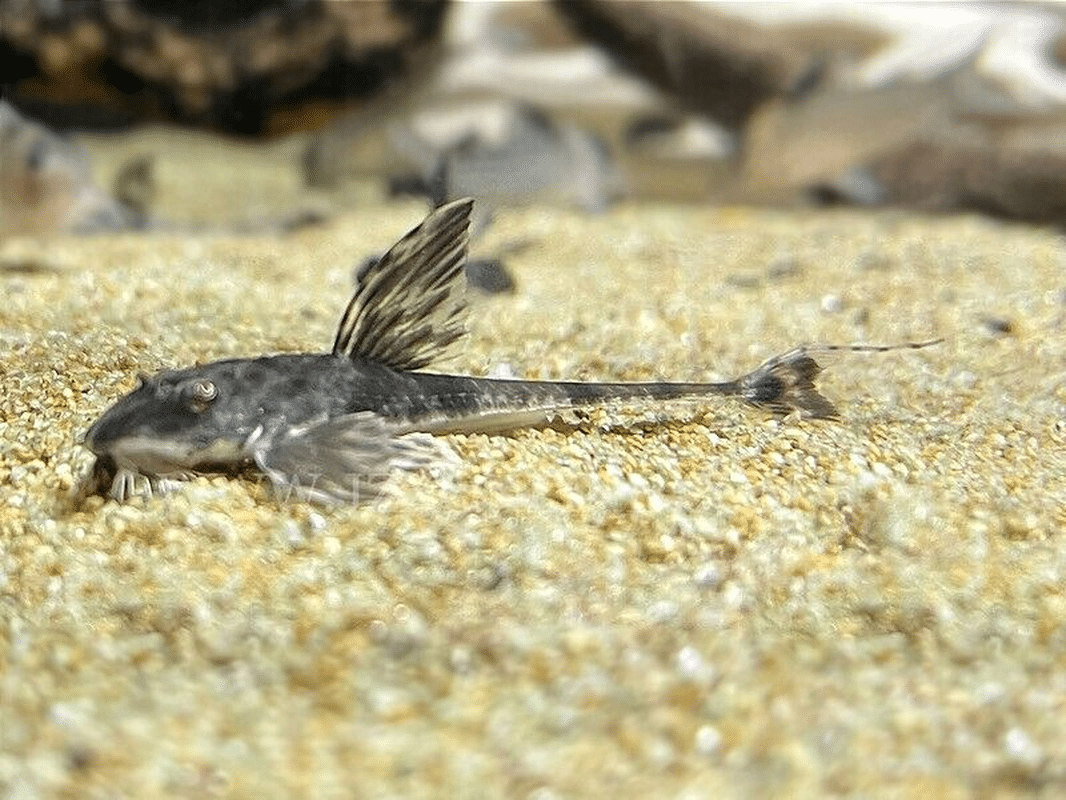
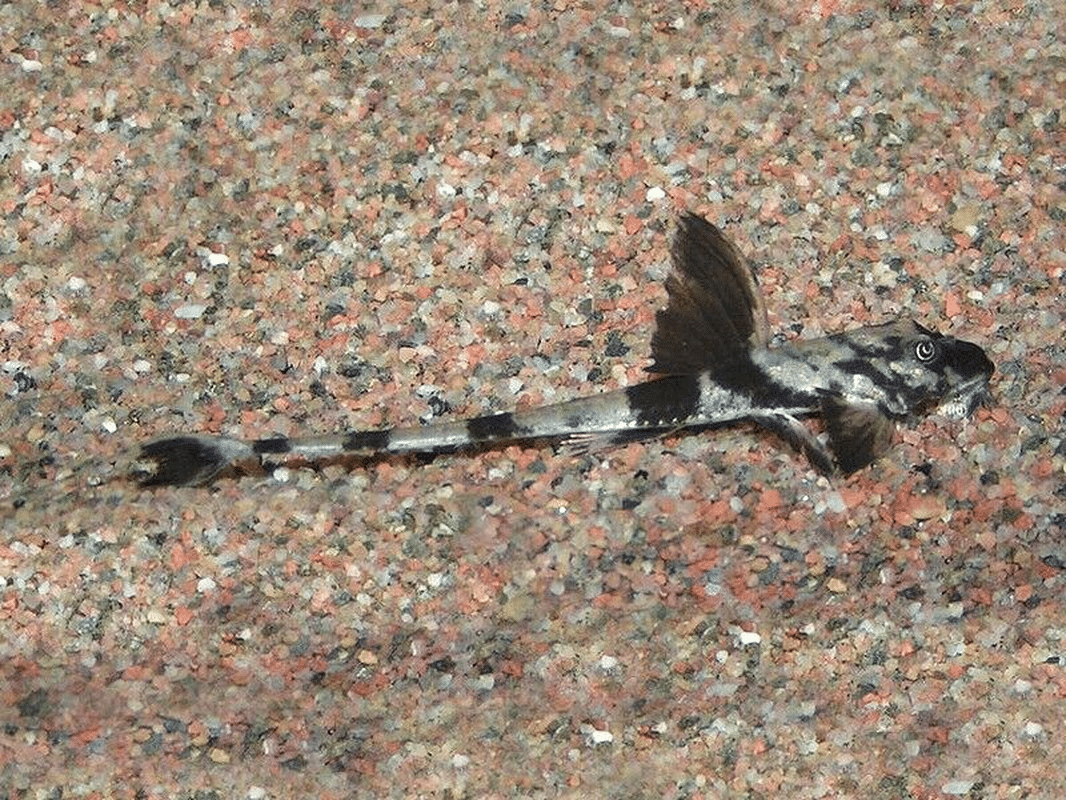
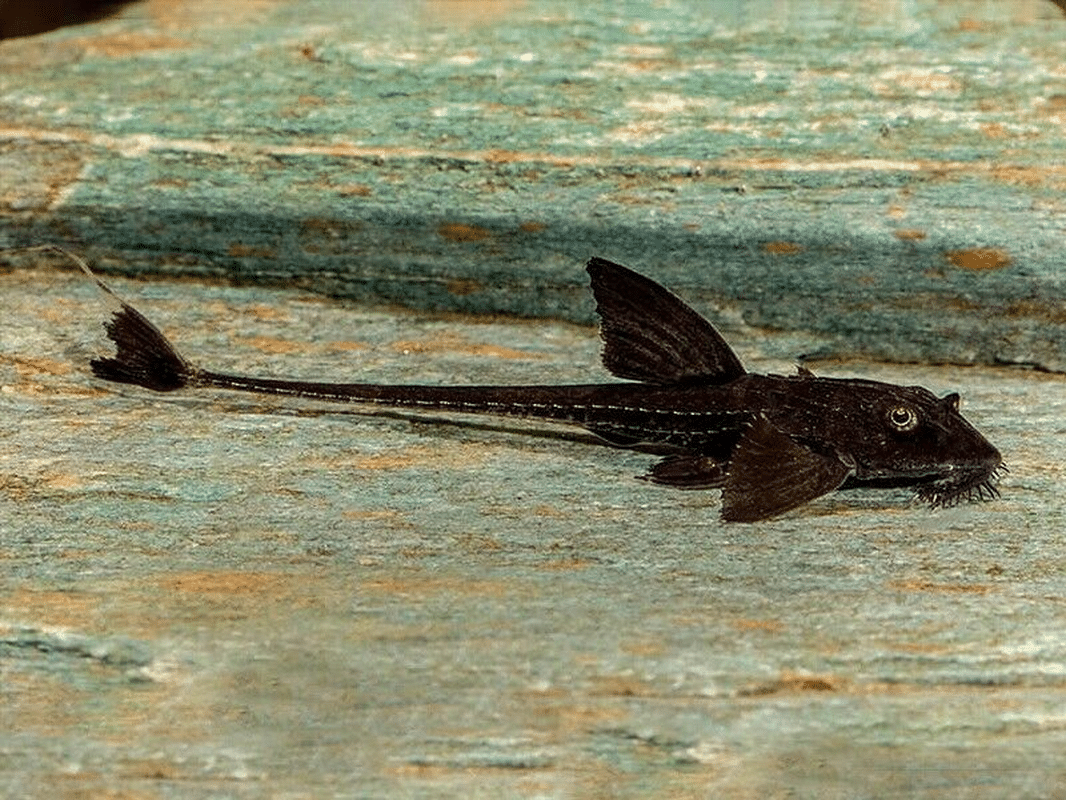


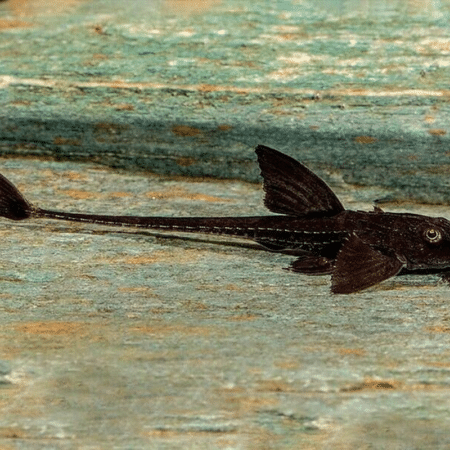

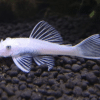








Laura Green (verified owner) –
I recently added a Marbled Whiptail Catfish (Loricaria simillima) to my community tank, and I couldn’t be happier! After about two months of watching them thrive, I can confidently say they are a delightful addition to any aquarium. Not only are they visually stunning with their marbled pattern, but they also have a peaceful demeanor that makes them perfect for a community setup.
What I love most is their natural behavior—these little guys are fantastic algae eaters, diligently cleaning my tank while also providing a calming presence. They tend to hide among the decorations and driftwood, which I believe makes them feel secure. This is essential for their welfare, and I appreciate how they seem to flourish in my 55-gallon tank. Compared to other catfish I’ve kept, they require less aggressive care and are surprisingly easy to maintain.
Shipping was quick, and the catfish arrived in perfect condition, reflecting the seller’s commitment to fish welfare. A minor concern might be that they are quite shy, so I recommend adding them to a well-established tank with plenty of hiding spots. Overall, I highly recommend the Marbled Whiptail Catfish to anyone looking to enhance their aquarium with a unique and gentle fish!